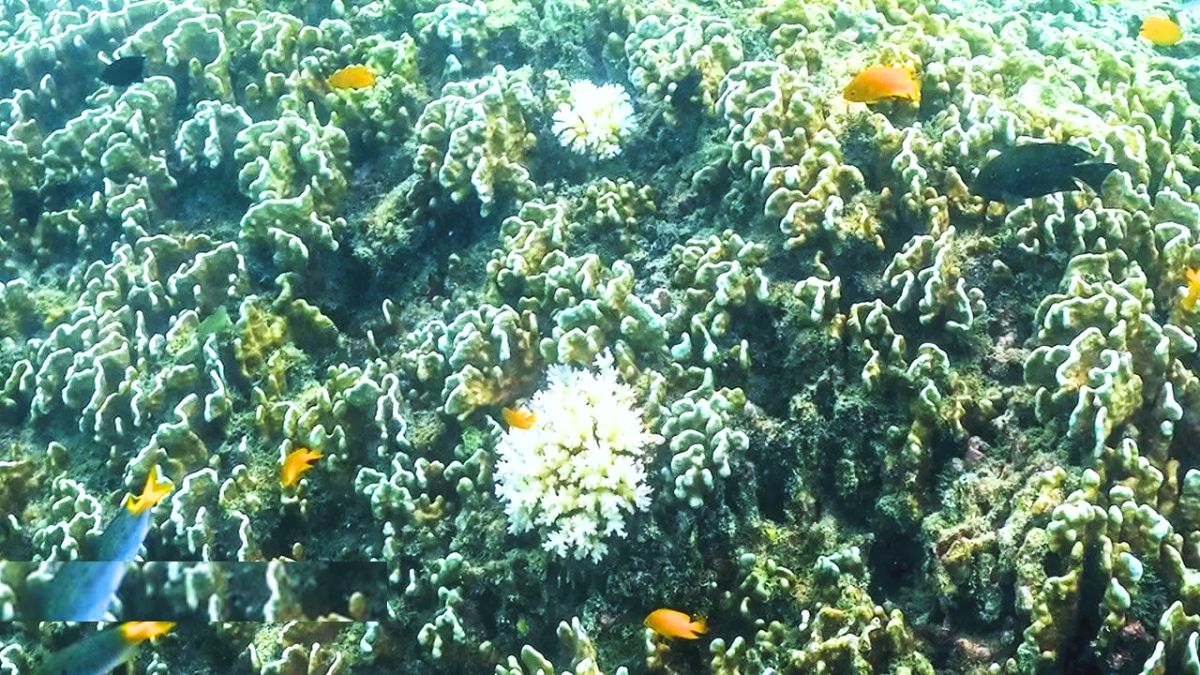News
Great Barrier Reef Hit by Worst Ever Bleaching Event

The Great Barrier Reef, located off the northeastern coast of Australia, is currently experiencing the worst bleaching event ever recorded, due to the effects of climate change, announced authorities.
The Great Barrier Reef Marine Park Authority, which is under the Australian federal government, stated in a press release that the cumulative impact suffered by the reef this summer was higher than in previous years.
This new mass bleaching event, caused by rising water temperatures, is the fifth in eight years.
The Great Barrier Reef, stretching over 2,300 km along the coast of Queensland, is often regarded as the largest living structure on Earth.
It houses a highly diverse ecosystem, with over 600 species of corals and 1,625 species of fish.
Aerial surveys have shown that approximately 730 reefs out of over 1,000 observed have experienced bleaching, the Authority reported.
This phenomenon occurs when water temperatures rise, causing the expulsion of symbiotic algae that give corals their vibrant colors.
If high temperatures persist, the corals turn white and die. In several areas of the marine park, corals have been exposed to record heat levels, with the 2023-2024 Australian summer being the second warmest on record in the region.
“The Great Barrier Reef is an incredible ecosystem, and although it has shown resilience time and time again, this summer has been particularly challenging,” said Roger Beeden, the Authority’s chief scientist.
During a visit to the Great Barrier Reef, journalists from AFP explored one of the hardest-hit areas.
Lizard Island, a small tropical paradise off the northeastern tip of Australia, is usually teeming with flourishing coral life.
However, it is now a marine graveyard, with around 80% of the reef bleached this summer. Many of these corals will struggle to survive.
Marine biologist Anne Hoggett, who has lived and worked on Lizard Island for 33 years, explained that when she first arrived, coral bleaching occurred only about once every ten years. Today, it happens annually, to varying degrees.
“We do not yet know if they have already suffered too much damage to recover or not,” she said.
Australia has already invested around 5 billion Australian dollars (3 billion euros) to improve water quality, mitigate the effects of climate change, and protect endangered species.
As a result, UNESCO temporarily decided not to list the Great Barrier Reef as a world heritage site in danger in August 2023, a threat looming since 2021.
However, Australia is one of the largest emitters of greenhouse gases, a major exporter of natural gas and coal, and has only recently set what are considered to be unambitious targets to achieve carbon neutrality.
The issue is not confined to Australia: on Monday, the US National Oceanic and Atmospheric Administration (NOAA) announced that the planet is experiencing its second largest coral bleaching event in ten years.
“Coral bleaching is becoming more frequent and severe,” noted Derek Manzello, coordinator of the NOAA’s Coral Reef Watch, citing record ocean temperatures.
Source: Defi Media











